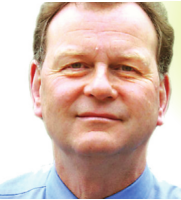Achieving efficiency is a crucial test for thoughtful organizational agility
As has been widely reported over the past couple of years, workplaces, particularly in the knowledge economy, have either undergone or are being pressured to add flexibility features to their operations. The combination of Covid-related adjustments and technical innovations has resulted in a reassessment of what productivity and by extension appropriate workplace agency looks like in the modern workplace.
A 2021 Ipsos survey revealed that globally 30 percent of workers would attempt to leave their jobs if required to return to the pre-pandemic office setting. Many of the ever-plugged-in younger cohort of workers see only an upside to having jobs with flextime. Benefits such as managing the complex demands of modern living, taking care of children and elderly parents, reducing commuting time, and functioning when one is most energetic and constructive during the day are among the advantages cited as desirable with pliable scheduling and task requirements.
Flextime features are now much more present in recruiting job descriptions. Some of this is undoubtedly because of the increased demand for flexibility from a workforce that seems to be sorting itself into those oriented toward resultsonly vs. traditional workplaces, but also due to the uncertainty of the future. Covid has not completely gone away and with further environmental changes said to be coming from climate change, who knows what is next? Disruption is at least as likely, as is stability when planning operationally.
However, workplace change of the sort being described here needs to be assessed and designed thoughtfully. It can be easy to dump on traditional workplaces as having rigid, arbitrary and ineffectual routines, like for example, habitually scheduled staff meetings laden with fill-in blah, blah, blah. Yet, as resiliency transformations occur, it can be useful to see not only what is gained but also what is lost by such modifications.
A case could be made that as customary practices dissolve, not all of the consequences may be necessarily positive. Of key importance is what it means to be professional. Parameters were established over time to separate work life from non-work life. We got used to sliding in and out of work modes with a regularity that brought predictability, certainty and some semblance of balance.
One negative element of blurring the distinction between work and leisure time is the always “being on” phenomenon. When flitting in and out of work mode multiple times per day, including answering supervisor emails at 8:30 p.m. and being ready to respond to the Amsterdam office at 6:30 a.m., cumulative work time can approach 10-12 hours. It begs the question of who benefits. Probably not the worker.
Also, professional norms and protocols used in performance reviews and advancement decisions have been based in an in-person work context. Are the expected actions of workers who work from home holding up fairly to legacy achievement standards? Managers still wedded to the notion that time on tasks equals productivity may be less inclined to favorably view fragmented work as effective, even if the results are of similar quality or perhaps even better than before.
This can be especially problematic for new hires onboarded with a company practicing flextime. How well can management really get to know their direct reports when they are working remotely? Perhaps fine — or perhaps not. New workers are motivated to do well at their new jobs and are trying to navigate expectations and learn company culture digitally. Might they be ripe for various types of exploitation, such as working exceptionally long hours or having to face other unreasonable demands from management or co-workers in a flextime environment? The possibility is certainly there.
Decentralization does have its benefits.
But it also could have liabilities. As we redefine what it means to be professional in a flextime world, we need to be mindful of how to achieve efficiency in a way that rewards both management and front-line workers. This challenge is a subset of organizational agility and a crucial one going forward.
Bill Ryan writes about career, employment and economic topics from his home in North Sutton.